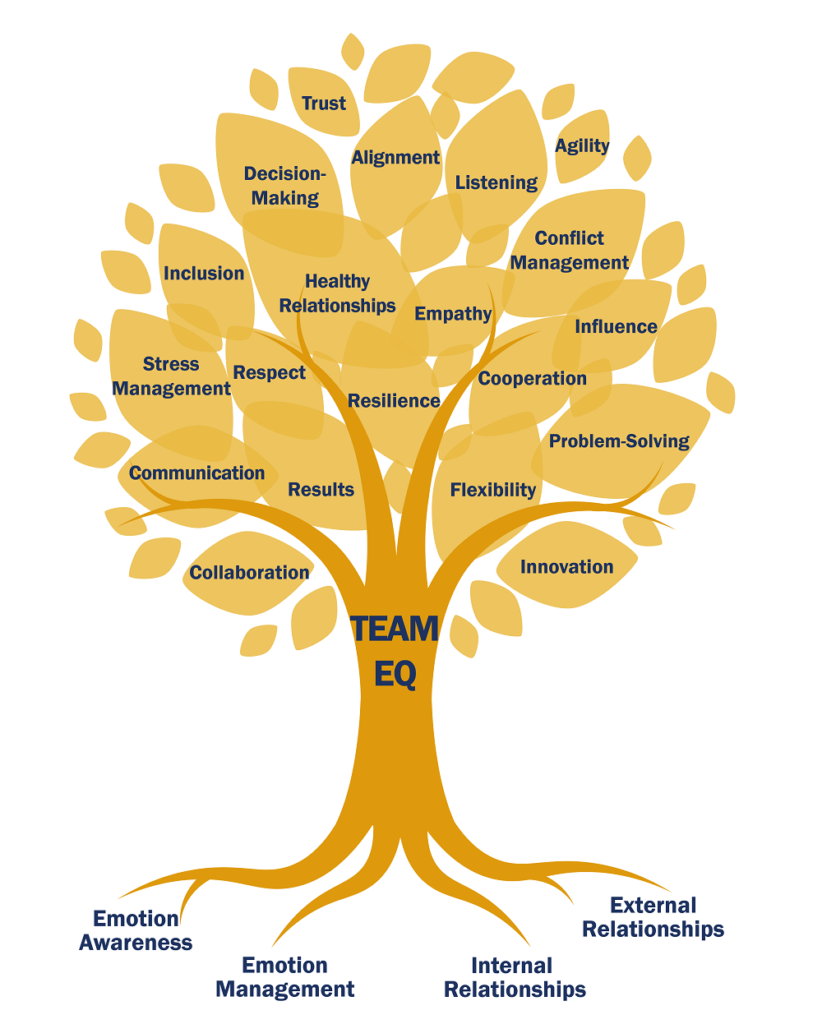This post is by Evan Watkins in partnership with Weaving Influence, a full-service digital marketing agency. Since launching 10 years ago, Weaving Influence has helped clients launch more than 150 books, carving its niche in working with authors, thought leaders, coaches, consultants, trainers, nonprofit leaders and speakers to market their services and books.
When Dr. Jean Greaves and I set out to write our recent book on teams and emotional intelligence (EQ), we started with a review of the substantial amount of data TalentSmartEQ had collected over the last decade in our work with teams. We analyzed the data from the hundreds of teams (and thousands of team members) who took our team EQ assessment.
As we poured through 2,133 comments, a number of clear patterns, themes and insights formed. Each insight helped shed some light on the challenges teams face as they try to connect and deal with the emotions that inevitably arise in their work together.
What follows are three of the most common comments we heard from teams, along with specific EQ strategies that we recommend using in those situations. Apply these strategies to address these issues in your team, and you’ll see improvement to your team EQ.
“One or a few members of the team dominate our group.”
What the comment tells us:
- Teams want to tap into diversity of perspective and opinion. We read things like, “So and so thinks their opinion is the only one that matters,” or “This team is run by two or three individuals with too much power.” Or on the other end of the spectrum, “It’s so tough to get everyone to speak up. I feel like only a few of us participate even in important meetings.”
- Teams resent people who dominate the discussion. A team wants to feel like the whole group matters. When one or few members get too much of the attention or power, others complain.
What your team can do:
- Set aside time for problem-solving. Try this strategy out for your next important meeting or problem. Give everyone a chance to prepare and set an expectation that everyone will share. If you need to, you can create a formalized process to ensure that people don’t dominate the conversation (like taking turns). Establish a mutually agreed-upon structure and purpose for the meeting that includes how each person will contribute. At first, the structure may seem rigid and unnatural, but in time, your team will adopt the structure and grow used to it. More voices and perspectives will surface.
“Go directly! I don’t want to hear about it!”
What the comment tells us:
- Teammates talk behind each other’s backs – a lot. Team member comments say things like, “Talk to the person that has the problem and not to someone else that doesn’t have anything to do with it.”
- Surprisingly, the third party doesn’t want to hear that negativity. It’s really tough to bring issues directly to the source to work them out. But, the complaining and negativity wears on people and disrupts the team dynamic.
- Gossip is like a drug. Research shows that gossip stimulates pleasure in the brain, which is why your co-workers can’t help but hear you out and act genuinely curious in the moment. But, as the comments show, it wears off fast and leaves a lingering sense of negativity.
What your team can do:
- Make it a team norm to have tough conversations directly. Enforce this norm when you hear other people talking behind backs. Refuse to engage unless it is a direct conversation, and encourage people around you to approach their conflicts directly. Model this behavior yourself by having effective and direct conversations.

“Set your feelings aside.”
What the comment tells us:
- The sentiment that “there’s no place for emotions at work” is, unfortunately, still alive. People constantly comment on this. They say, “You need to separate personal feelings from the work at hand,” or “Understand that what we are discussing is business and only business. A challenge on people or job quality is not a personal attack.”
- People use “no place for emotions” as an excuse to be rude. Like the second comment above, teammates use the idea that emotions don’t belong in the workplace to justify delivering a message in a disrespectful way. However, there should be responsibility for how a message is delivered. It’s not physically possible to set all feelings aside.
What your team can do:
- Notice and acknowledge discomfort. Acknowledge that emotions are real and make an active effort to work with them, not against them. To begin to manage how emotions impact your group, practice noticing and acknowledging discomfort. When a team member is uncomfortable, resistant or reactive, another team member can acknowledge this and make it clear that reactions are valid and important and that the team wants to understand.
- Ask questions and listen actively. This will break down the idea that “emotions get in the way of work” and reinforce the idea that emotions are inevitable so you better pay attention to and learn from them.
The bottom line
Start to work on the strategies above as a team to not only address these specific issues, but also to begin improving your team’s EQ so you can reap all the benefits of a high team EQ.
Evan Watkins, former senior content writer at TalentSmartEQ, is the co-author of the book “Team Emotional Intelligence 2.0.” Connect with Watkins on LinkedIn.
If you liked this article, sign up for SmartBrief’s free email newsletters on leadership and business transformation, among SmartBrief’s more than 250 industry-focused newsletters.
